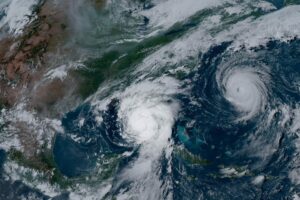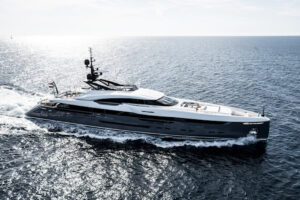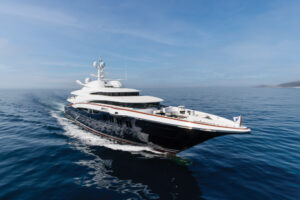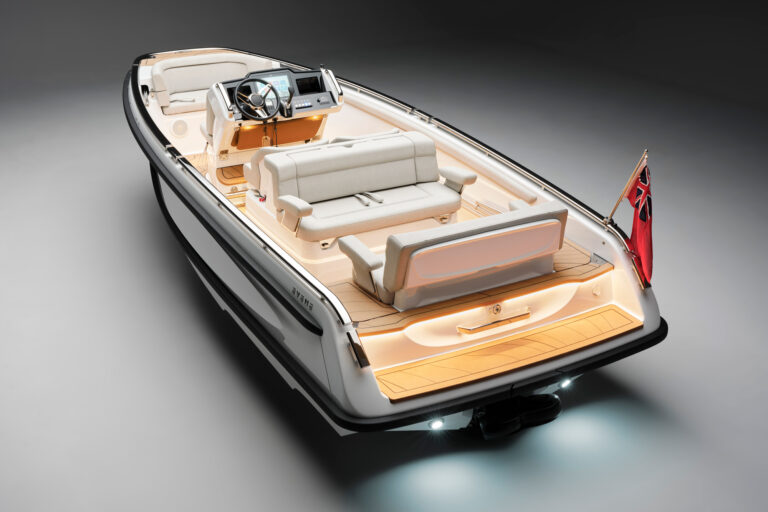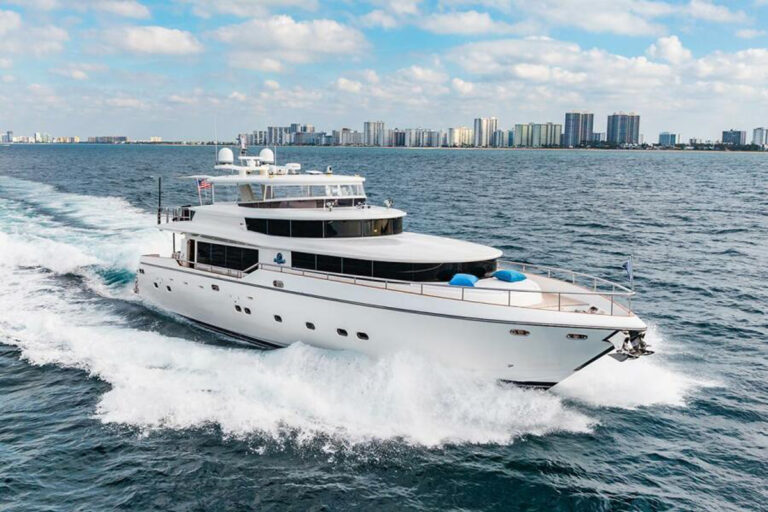Despite the rumors, you can find summer in the Canadian Maritimes. Point your bow into the Strait of Canso, which separates Cape Breton Island and Nova Scotia. The Canso Canal lock will ease your vessel into northern seas very different from what you might expect.
These waters are fog-free, with temperatures warm enough to swim. On land, numerous islands offer breeding seabird colonies, a port city transported from old England, stunning red cliffs and coastal villages with a French penchant.
Prince Edward Island dominates the southern shores of the Gulf of St. Lawrence. In 1997, Confederation Bridge linked the island to modern times, shocking natives who had driven on the left-hand side well into the 20th century and prospered on growing prized potatoes and delivering the country’s tastiest lobsters.
One positive side effect of this modernization is that the cuisine on Victoria Row in Charlottetown, the capital and main port, is now the best anywhere between Quebec and Paris, 3,000 miles east. Charlottetown also offers Victorian stone and brick architecture on Great George Street, traditional art including Innuit bone carvings, oil paintings by early colonists in the city library, and galleries and boutiques.
Visiting boats up to 90 feet LOA can stop at Peake’s Wharf or at the Charlottetown Yacht Club docks. Larger vessels can go to commercial wharves or anchor in the protected bay fronting Charlottetown.
Because the pleasant season in the Gulf of St. Lawrence is too short for those who prefer to dally, we postponed a more thorough exploration of the 100-mile-long island and headed west and north, out into the gulf. Two nights later, Bonaventure Island rose off the bow. It was a bluish mound afloat in a mirror-calm sea reflecting the pink dawn.
At close quarters, the 250-foot cliffs seemed spotted with snow, but the view was actually of guano and birds, thousands of them. About 75,000 gannets nest on Bonaventure. Rows and rows of kittiwakes dotted the lower ledges. Gray seals loitered in the sea below while some dried out on the rocks, holding their tail fins and heads high over their arched bodies. A feeding minke whale circled, puffing like a toy train.
Getting personal with the gannets was easy. After anchoring off the Percé village pier, we took a tour boat to Bonaventure Island. From a trail through a forest of fragrant firs and flitting songbirds we stepped out onto a flat piece of land packed with nesting gannets. Thousands of bird voices melted into a cascading roar. For a close-up view, we leaned against a railing, arm’s length from immaculately elegant birds, their profiles and brilliant eyes pure art nouveau. Couples tended their chicks, awkward with oversize feet and beaks, shedding fluff and snoozing.
The west side of the island, away from the birds, was all meadows. Walls of purple flowers framed what looked like dollhouses beneath a towering Mont Sainte Anne. The 280-foot Percé Rock is a local geological celebrity, packed with fossils.
We found the village a mixture of Victorian homes and bland motels, of fast food joints and trendy restaurants. Unexpectedly, Café Atlantique at La Maison de Pecheur, at the foot of the town pier, had the best menu. It’s no wonder, since Georges Mamelonet, the French owner, used to cook on large charter yachts.
Cap-aux-Meules, the main port town in the Magdalen Islands, has Club Nautique for craft as long as 60 feet LOA and the main harbor for large vessels. The local boatyard, Leo LeBlanc et fils, also builds new boats up to 67 feet. Customers can count on seaworthiness and mechanical reliability. Since 1965, the yard has been producing vessels that must be able to handle Gulf waters.
To find out just how bad the waters can get, I buttonholed Normand Briand, 19-year veteran of the Canadian Coast Guard. He skippers the self-righting, cutter-type Arun and runs about 50 missions a year, some in 65-knot gales.
“The good weather, he said, “lasts from mid-July till the end of September.
Not that it gets completely calm; kite-surfing freaks and competitive windsurfers flock to the area all summer.
Briand’s family, settlers from the 1700s, represents the majority of 6,500 Madelinots. Tiny, English-speaking communities have survived only on Île d’Entre and on Grosse Île. The ancestors who originally came here did so with the intent to hunt walrus. Thousands of these animals, now gone, frequented the shores near Old Harry and Baie Seacow on the northernmost islands.
Today, Île de l’Est and its five-mile beach, backed by high dunes and bogs, is a National Park. We had the winding trails bordered by ripe, wild blueberries all to ourselves.
The Magdalen archipelago stretches for about 40 miles. Having left our boat in Club Nautique, we roamed in a rented car. The colors and contrasts of topography were striking. Pastoral scenes prevailed on Île du Havre aux Maisons among gentle, grassy hills. The west shores of Île Cap-aux-Meules look into the eye of winter storms that have chiseled the red sandstone into precipitous chasms and cliffs. Île du Havre Aubert, with interior woodlands and a huge lagoon of shorebirds bounded by thin strips of dunes, ends in La Grave, once a busy fishing village and now the hangout of artsy types. A marked 6-foot channel leads to a pleasure craft dock. One museum celebrates the nautical past and another shows the diverse life in the surrounding seas.
This is just a sampling of the exciting, open landscapes this area offers cruising yachtsmen. Consider scouting about a bit yourself. I suspect you, too, will vow to return.

